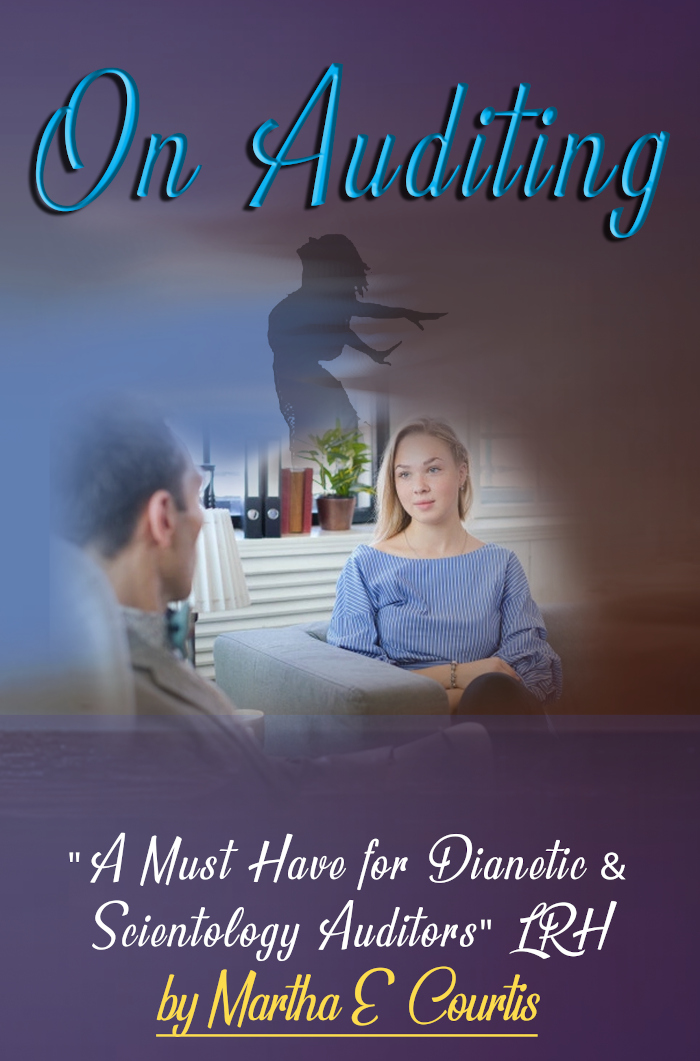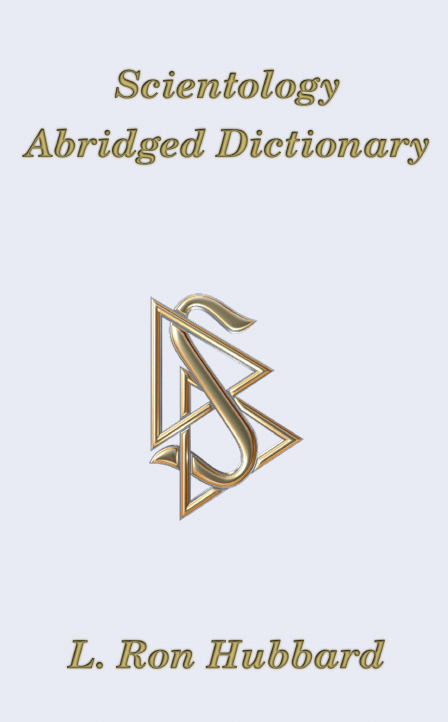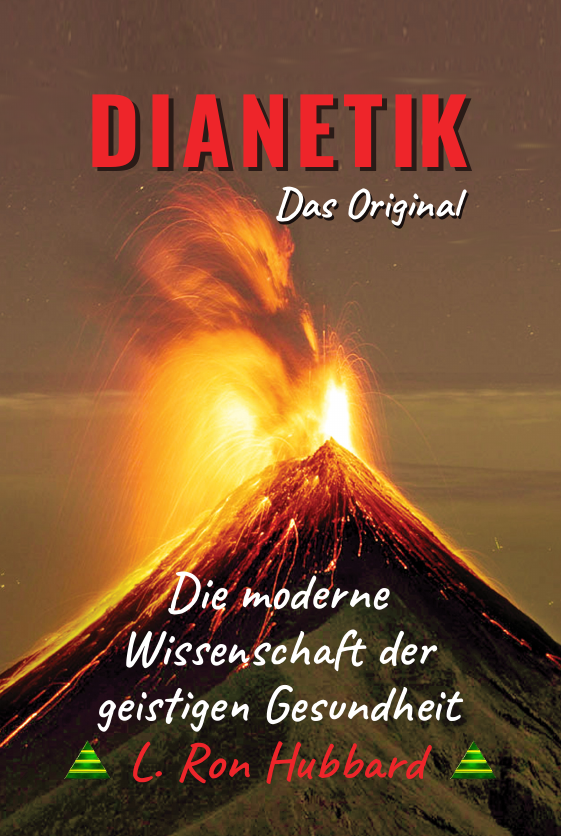- Details
- Kategorie: Scientology, sonstiges
An Introduction to Scientology by Reg Sharpe
L. Ron Hubbard emphasizes the need to take into account the level of knowledge of new people for the dissemination of Scientology. He himself always intended to write books for that purpose but never found the time, as he focused on filling the last gaps in the research of the technology for freedom. Therefore, it became the task of trained Scientologists to write these books.
And dozens of such books were written to introduce Scientology to the general public.
This book by Reg Sharpe is one of the best in this respect, as LRH emphasizes in a policy letter on August 21, 1963:
Creating ivory towers, we then cut our public line. You would be amazed how far above the public technical grasp even This Is Life is! Yet it, at the moment, is our best Scientology I (Introduction) book.
The Church of Scientology (controlled by the deep state), did not only have their hands full with ridding the existing Scientologists through mistreatment of all kind, but as well removing these books from circulation since the late 1970s; as they could not afford further dissemination and expansion that would soon follow.
ISBN paper back: 978-3-947982-20-2
- Details
- Kategorie: Scientology, sonstiges
Author Martha E. Courtis
"A Must-Have for Dianetic and Scientology Auditors" LRH
In a recent book On Auditing by Martha Courtis, the gradient scale of Dianetics and Scientology is made extremely apparent, and it is shown there quite expertly how each advance only extended knowledge already held, and the inevitable consequence of Standard Operating Procedure in Scientology. What an Auditor Should Know by L. Ron Hubbard, Dec 1953, Journal of Scientology, 22-G
Setting out in a sparkling style, Courtis sails through the problems of the auditor from early Dianetics to late Scientology and at the same time tells any fledgling how to go about it. ...
Her many charts and clever illustrations increase the readability of the volume. And she has combined recent material from PAB's into a large chart in the back of the book. The entire Hubbard Chart of Human Evaluation Parts I and II, and the Chart of Attitudes are also present. ...
The volume uses the language and technologies Hubbard has developed and uses them well and with intelligence.
Courtis shows clearly the path followed by Hubbard in his explorations of the mind and spirit and discovers that the whole is a complete evolution from engrams to 'The Factors' and that each part has its place.
So Courtis writes from a well-informed viewpoint on what Auditors should know and what techniques will do. ...
Charming, witty, happily married, Martha Courtis is one of the better human beings on Earth. The fact reflects itself in her book — a must for every Dianeticist and Scientologist. Journal of Scientology 23, 15. Jan 1954
ISBN: paper back 978-3-947982-21-9
- Details
- Kategorie: Scientology, sonstiges
The State-of-the-Art in Dianetics and Case Supervision
This new edition addresses two readers:
First, non-Scientologists who want to learn about Dianetics and try it out for themselves to see if it works, what its value is, or even to use it professionally.
Second, I am addressing Scientologists with this book.
This book was originally published in 1975, thus belonging to a whole series of ghost works that were initiated, allegedly, by L. Ron Hubbard (LRH); these works, however, disappeared shortly after.
This book was created by staff based on two course packs: The original Hubbard Standard Dianetics Course (HSDC) and the Dianetics Case Supervisor Course. With all the handwritten C/Ses by LRH this is a valuable tool to bring perfection to your auditing.
The difference between Standard Dianetics and New Era Dianetics NED (since 1978, by David Mayo) is explained and why you should replace NED with the original as per HSDC. This book is up to date, regarding Dianetic inconsistencies.
ISBN: 978-3-947982-17-2
- Details
- Kategorie: Scientology, sonstiges
In the Science of Scientology it was necessary to define about 200 hundred technical terms. These terms have been defined by the founder L. Ron Hubbard and finally issued in this small dictionary: The Scientology Abridged Dictionary, originally published in 1965 by HCO, East Grinstead, Sussex, UK.
This was yearly reprinted, and in 1970 - under LRH - revised. This amended version is reprinted here. We added footnotes to all entries, which were revised in 1970 for your information.
When entering into the study of Scientology, you need this book to lookup all the technical words you do not understand. Later you should read the whole book to learn the rest and be prepared for your future study. Come back again and again and read this book as this will deepen your understanding of the subject; as whole concepts of the Scientology basics will be learned by clearing these words. So, this could be called The Book of Basics.
As LRH said a year after publication of this dictionary in the lecture on 29 November 1966, that this was not yet complete: The truth of the matter is, the definitions and meanings of Scientology have not, from the most basic values on up, ever completely been covered. So, he announced a series of lectures where he took up the missing words and defined them for us. This is why I have added these three lectures here, since 1966, these definitions have never been added to the Abridged Dictionary as it was intended. Now it is complete in 2020 for the first time per LRH.
The Church of Scientology - significantly controlled by the Deep State - has removed this book from circulation since the mid 1970s. What they couldn't use at all was a good understanding of the subject and the resulting expansion of Scientology.
For decades, we hear the claim that "Scientology is the fastest growing religion," but every Scientologist knows the truth; that the spacious premises of Scientology (The “Idle Orgs“) are mainly empty and unused. Scientology has been shrinking since the 1970s, only about 2-3% of all original Scientologists are still "on board".
80% of the St. Hill staff recruited by LRH, and 80% of the Class XII auditors trained by LRH, and 80% of the Field Auditors and Mission Holders have been SP-declared: thrown out of the Organizations. Others have left as well. – This says it all.
ISBN 172 pages, soft cover paperback 978-3-947982-23-3
- Details
- Kategorie: Scientology, sonstiges
Die Free-Dianetics-Edition macht den Leser auf die Übernahme der Scientology-Kirche durch den Deep State aufmerksam. Denn die RTC-kontrollierte Kirche vertreibt eine gekürzte, zensierte Version der Dianetik, noch dazu unter einem falschen Namen, sie vertuschen die Wissenschaftlichkeit, um sich als Staatsreligion anzubiedern.
Dies jedoch ist die komplette deutsche Ausgabe des Originals von 1950 mit sechs zusätzlichen Kapiteln gegenüber den RTC-Ausgaben, erstmals in Deutsch.
ISBN 670 Seiten, Hardcover m Schutzumschlag, deutsch: 978-3-947982-16-5
ISBN eBook, deutsche 978-171784566-5
Auch als kostengünstiger Ergänzungsband zum gekürzten Dianetikbuch der Kirche: nur die 6 fehlenden Kapitel:
ISBN Print, Deutsch: 978-3-947982-13-4
Das Unterbewusstsein: Jeder verwendet den Begriff, dabei scheinen nicht einmal die Experten wirklich zu wissen, was das ist. Was ist genau in seinen Tiefen verborgen? Einstein wusste, wir nutzen nur 10% unseres geistigen Potentials. Hubbard gab uns diese Selbsthilfe-Methode, mit der wir brachliegende Fähigkeiten erschließen können: die uns innewohnende Lebenskraft, Intelligenz, Intuition, emotionale Ausgeglichenheit oder Selbstbewusstsein.
Dianetik lüftet das Geheimnis um Ängste, Zwänge, Hemmungen, Sorgen, sexuelle Probleme, Stress, Erschöpfung und sogar chronische, psychosomatische Krankheiten.
Das Lesen des Buches eröffnet eine völlig neue Perspektive: Es ist einfach, den Verstand zu verstehen. Das Dianetikbuch geht über die Theorie hinaus und beschreibt ein leicht anwendbares Verfahren, seine besten Seiten bei sich und seinen Lieben zu entfalten. Dianetik wurde zu einem Bestseller, der sich jahrelang in den Top Positionen hielt, und bisher über 83 Millionen mal in über 50 Sprachen verkauft wurde.
Die Nr. 1 im Selbsthilfemarkt. Dieses Buch muss man kennen, wenn man mitreden will.
In dieser Freigeist-Ausgabe geht es um die wissenschaftliche Dianetik (exakt so, wie Hubbard es ursprünglich 1950 herausgegeben hat), nicht um ein religiöses Dogma mit revidierten Texten, wie es der Scientology-Verlag New Era in einer ähnlichen Ausgabe anbietet. Die entscheidenden Unterschiede werden von einem unabhängigen Dianetiker aufgezeigt, unabhängig und frei von irgendeiner Sekte oder Organisation. Käufer dieser Ausgabe stärken das Engagement, Dianetik frei von Monopolisierungsversuchen oder Verboten zu halten.
Diese Ausgabe enthält sechs zusätzliche Kapitel mit atemberaubenden und unverzichtbaren Daten aus der Dianetik-Erstausgabe von 1950, die in der Ausgabe von New Era unterdrückt werden. Das sind immerhin 11% des Originals, die bisher fehlten!
Ein weiteres Kapitel „Warnung vor Schwarzer Dianetik“ des Herausgebers deckt detailliert auf, wie die Scientology Kirche die Dianetik verfälscht und seinen eigenen Mitgliedern vorenthält.
Im Anhang werden Informationsquellen genannt, wo man z.B. kostenlos an digitalisierte Versionen der Werke von Lafayette Ron Hubbard gelangen kann.
Seite 2 von 3





